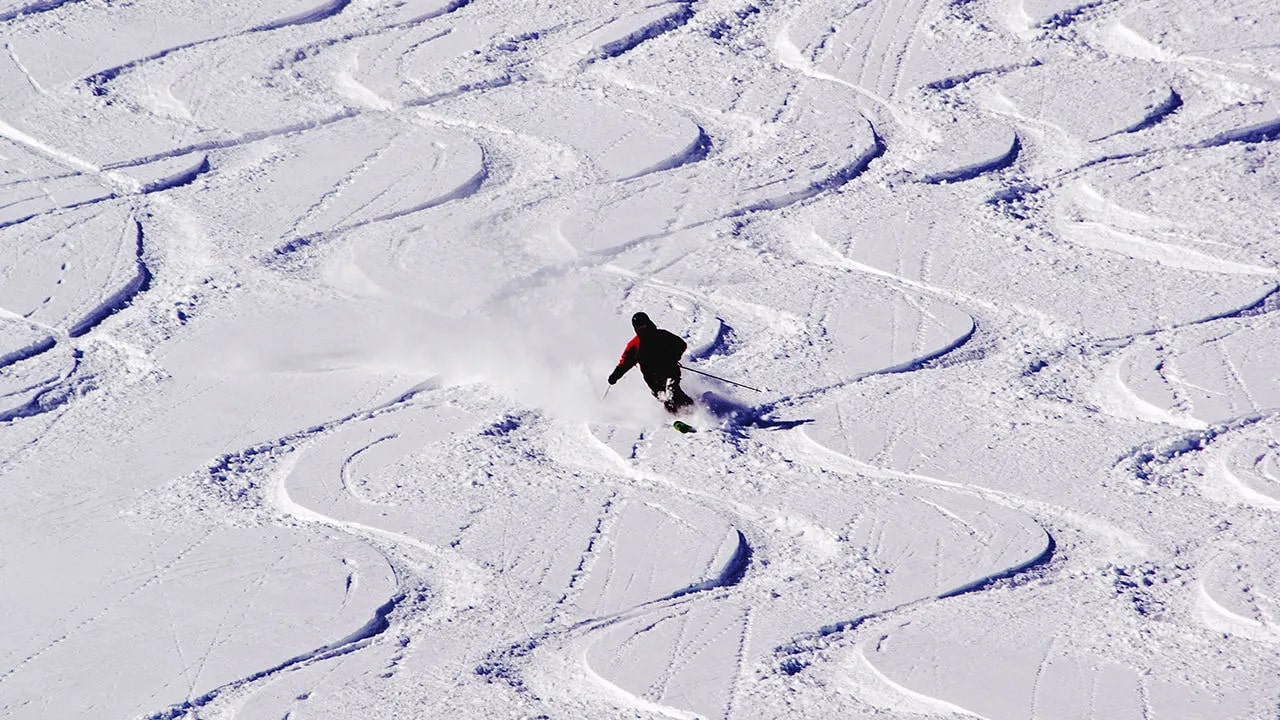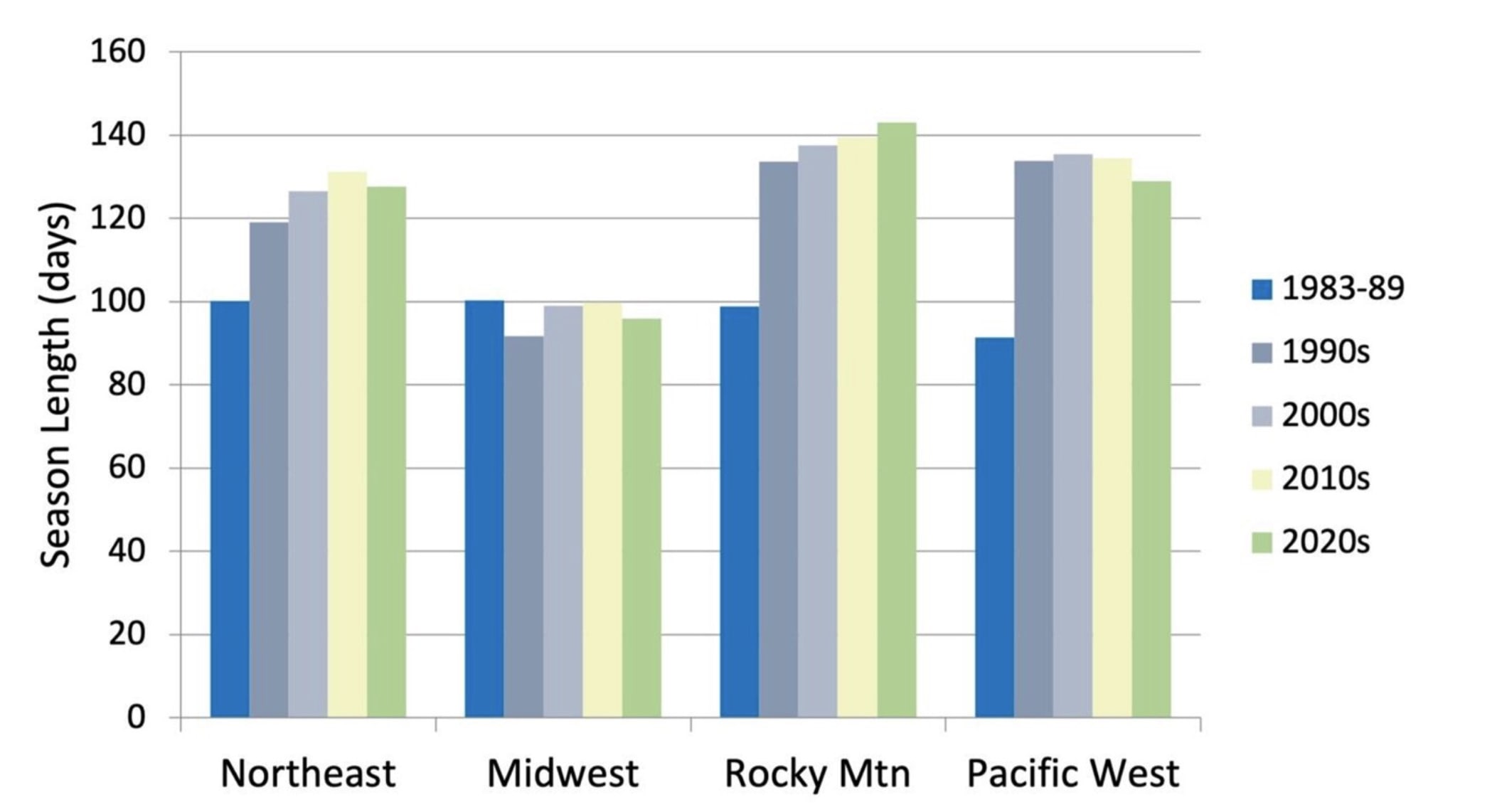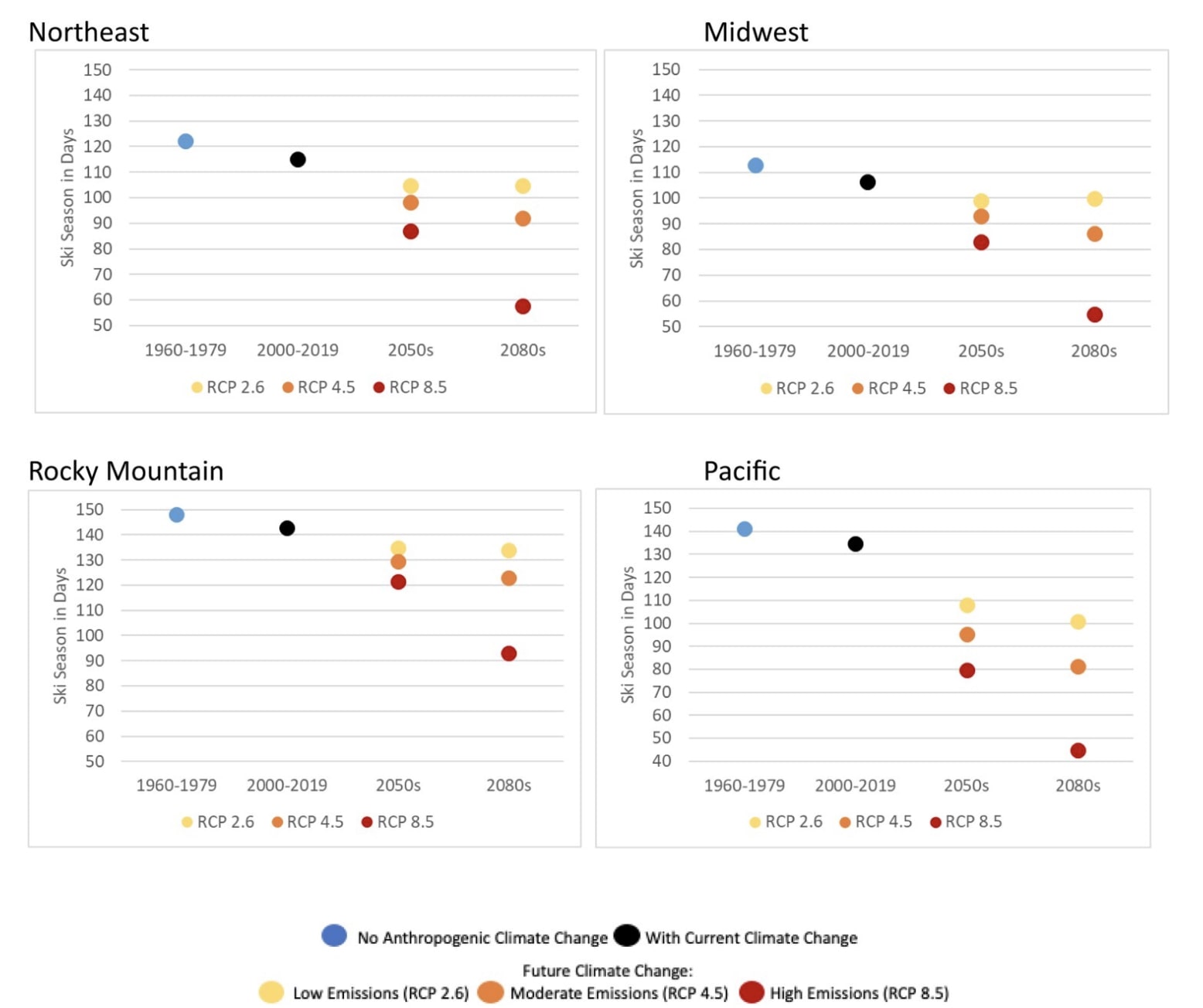
2023 was the hottest year on record across the globe. The effects of anthropogenic climate change vary but warming and the effects in mountain regions have outpaced other regions. Less snow, lower yearly snowpacks, and warmer winters are already being felt. But just how much is it affecting the ski industry?
Already, resorts have experienced shorter ski seasons due to more variability in natural snow throughout the season requiring an increase in snowmaking requirements while warmer temperatures leave snow conditions variable and reduce snowmaking opportunities. This year, Mount Bohemia, located in Michigan’s upper peninsula has already closed due to the lack of snow received this year. They are normally open until April and sometimes May but since they have only received 110 inches of snow this year, they had to close much earlier than expected.
A study performed to show how climate change is damaging the ski industry in the United States shows that relative to ski seasons from 1960-1979, the average ski season from 2000-2019 (with snowmaking) has shortened between 5.5 and 7.1 days. With the current pace of warming and the alterations to the snowpack, the effects are projected to be more pronounced across mountain regions with the possibility of winter ski seasons across the United States shortening from 73 days (relative to the 2000s). If current emission reduction goals are achieved, the study projects 56 days for each winter season and as little as 53 days if the current high trajectory of emissions continues. Many things contribute to the season being shorter but although natural snow will still happen, snowmaking will most likely not be able to offset the natural snow and snow melt experienced from climate change as it will drastically increase maintenance costs.

The U.S. ski industry will feel these effects heavily. Ski tourism might not slow initially but the industry will start to feel economic damages from reduced ski season length (fewer days for revenues associated with skier visits), an increase in snowmaking and grooming costs (machines, labor, and the infrastructure needed to use these tools to expand terrain access), and increased operational costs (water, energy, fuel). Overall the quality of snow conditions will reduce open and accessible ski terrain which can lead to a reduction of the consumer surplus value of ski tourism as skiers and snowboarders might look to other activities and trips to do in the winter.
Economic losses from climate change’s effects have already been felt across the ski industry. From 2000-2019, the average economic loss to U.S. ski area companies was $252.8 million. This data led to estimates that if everything remains stable besides climate the average economic loss nationally for the 2050s to be between $657 million and $1.3 billion.
If we want the U.S. ski industry to be there for generations to come, it is our responsibility (skiers, snowboarders, and ski resort companies alike) to advocate for climate action to protect our mountains.
